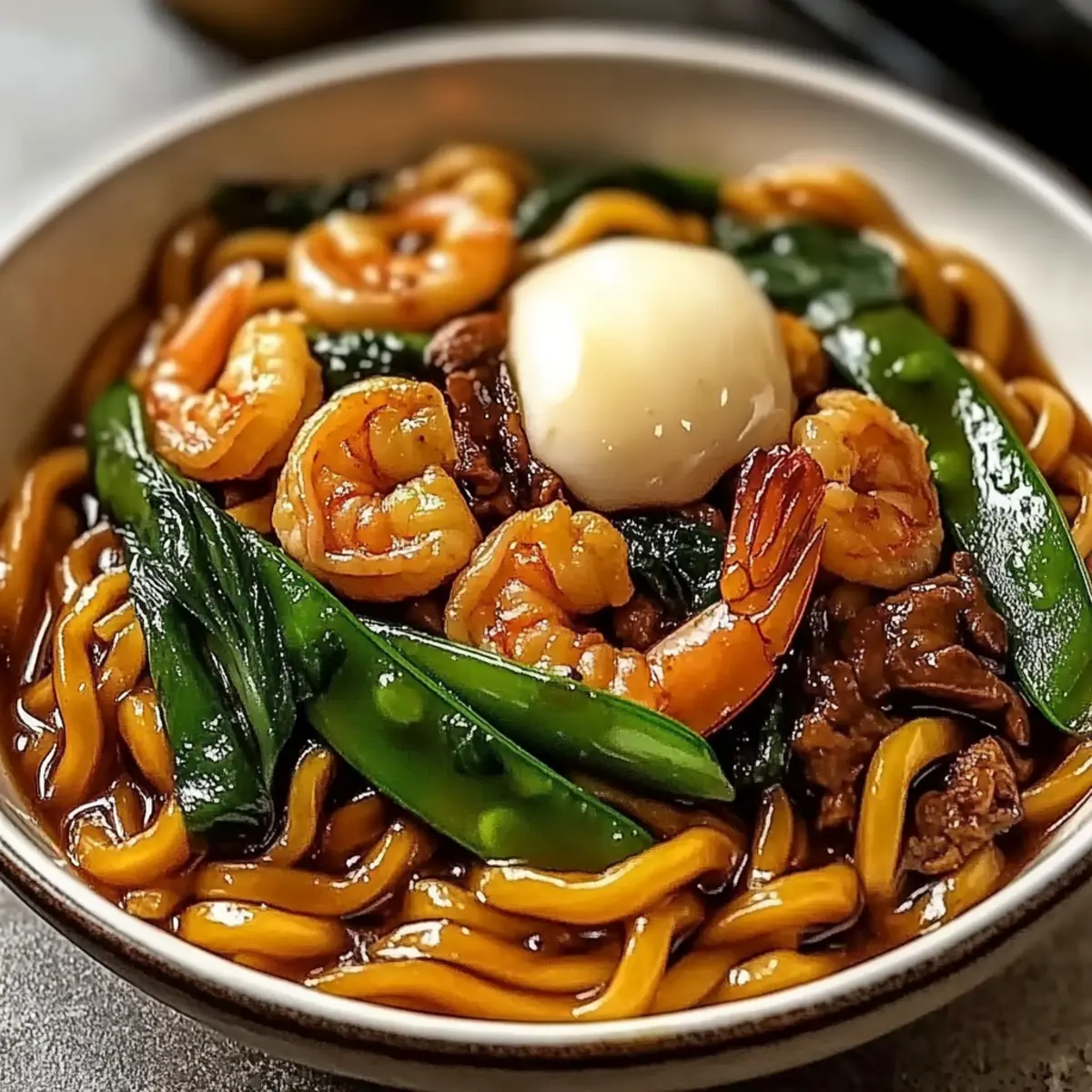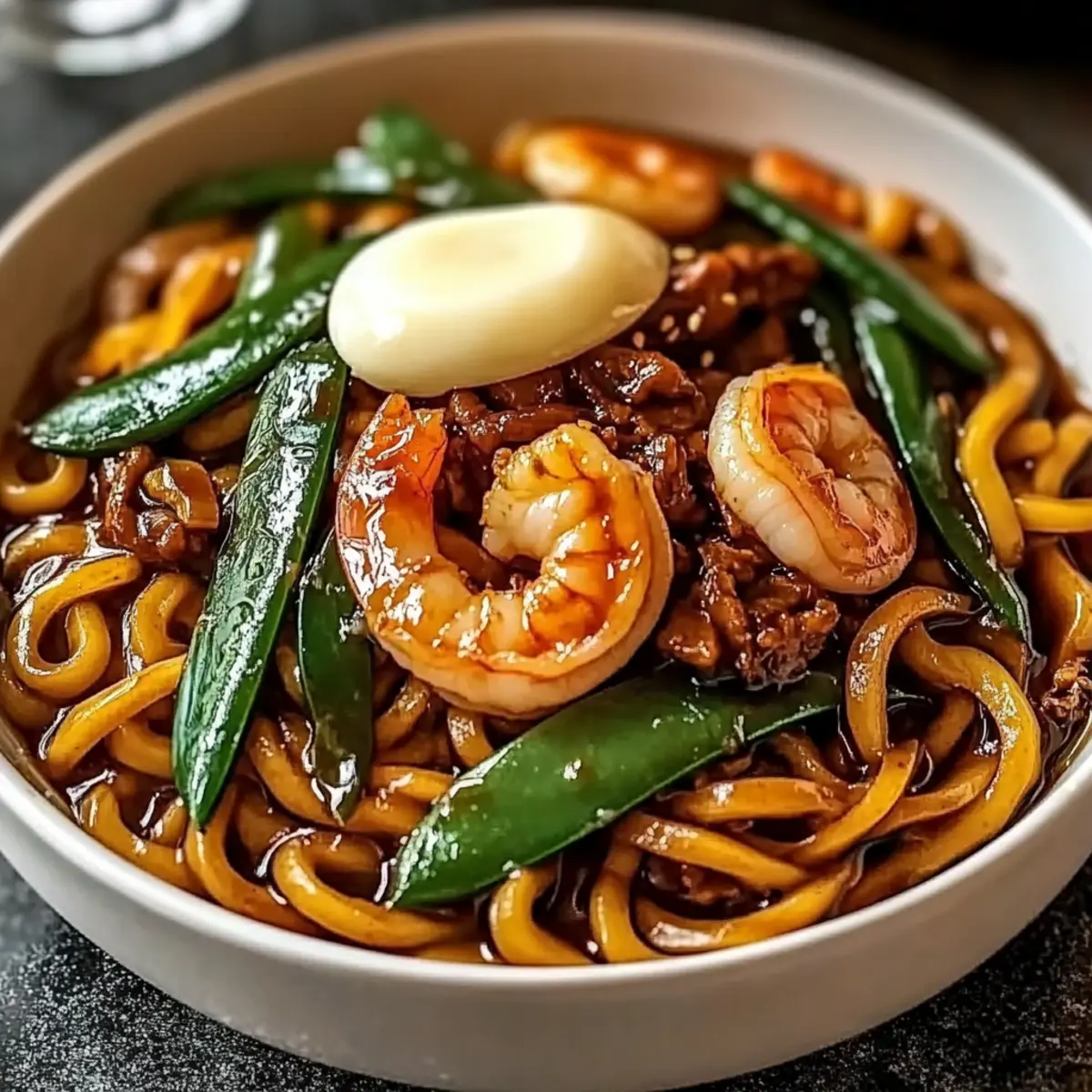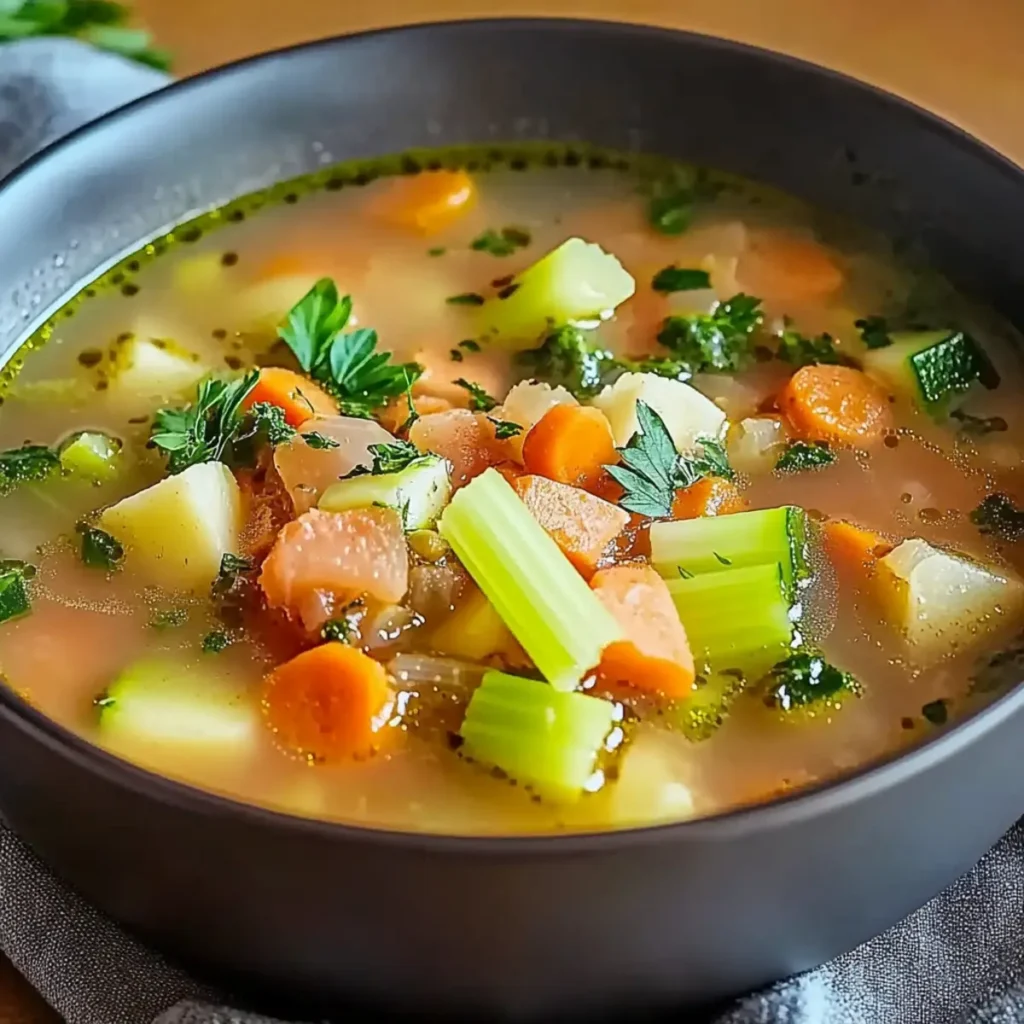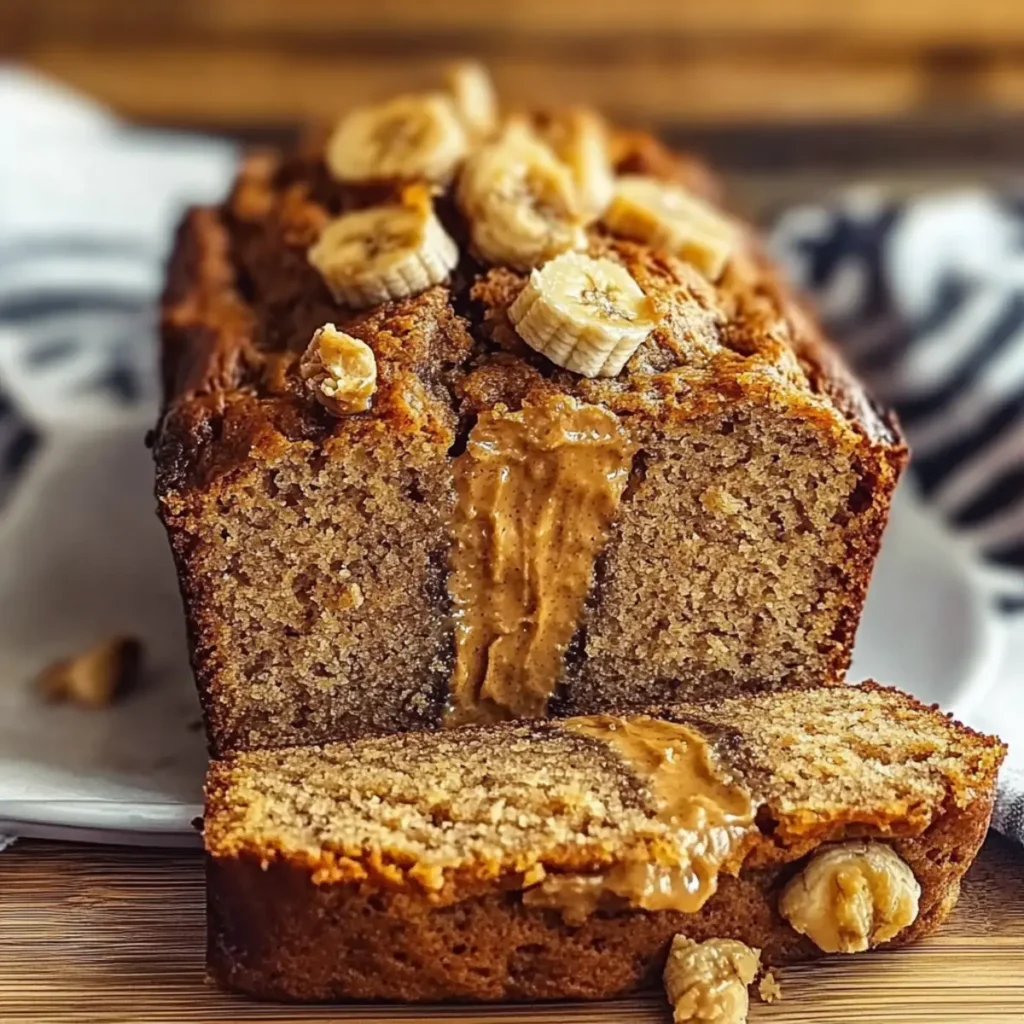Stepping into my kitchen, the aroma of sizzling ingredients ignites my culinary spirit—it’s time for a Yaki Udon adventure! This delightful Japanese stir-fried noodle dish, complete with thick, chewy udon noodles and a medley of vibrant vegetables, has become my go-to for quick and satisfying meals. The beauty of Yaki Udon lies in its versatility; you can easily customize it with your choice of chicken, shrimp, or tofu, making it a crowd-pleaser for everyone at the table. Plus, its quick prep time means you can whip up this healthy meal option even on the busiest weeknights. Are you ready to dive into a hearty dish that’s bursting with flavor and moments of culinary triumph? Let’s get cooking!

Why is Yaki Udon a Must-Try Dish?
Simplicity: The cooking process is straightforward, making this dish perfect for both novice and experienced cooks.
Customizable: Yaki Udon is incredibly versatile; feel free to mix and match proteins and vegetables to suit your preferences.
Flavor Packed: Every bite is a delightful explosion of savory tastes from the soy sauce, fresh garlic, and ginger that enhance the noodles perfectly.
Quick Prep: With a preparation time of around 30 minutes, it’s ideal for busy weeknights when you crave a comforting meal without the long wait.
Crowd-Pleasing: Whether you serve it at family gatherings or casual get-togethers, Yaki Udon is sure to impress everyone at the table, making it a standout dish.
Elevate your cooking with this easy Yaki Udon recipe that guarantees a satisfying and delicious meal every time!
Yaki Udon Ingredients
• Get ready to stir-fry your way to joy!
For the Noodles
- Udon Noodles – The star of the dish; thick and chewy for that satisfying bite. Fresh or frozen will work beautifully!
For the Protein
- Chicken – A delicious option; tender pieces bring heartiness to your Yaki Udon.
- Shrimp – Quick-cooking and packed with flavor; ensures a delightful seafood twist.
- Tofu – Perfect for a vegetarian option; absorbent and provides a great texture!
For the Vegetables
- Snow Peas – Crisp and sweet; they add a lovely pop of color and freshness.
- Bok Choy – Tender and nutritious; great for adding a mild crunch to your dish.
- Cabbage – Affordable and versatile; adds both texture and flavor that works well.
- Mushrooms – Earthy and savory; they enhance the umami experience in your Yaki Udon!
For the Flavor
- Soy Sauce – Imparts necessary umami and saltiness; use low-sodium for a healthier touch.
- Sesame Oil – Rich in flavor; it elevates the dish with its aromatic notes. If you need a substitute, vegetable oil will suffice.
- Garlic – Freshly minced is best; its pungent depth enhances every ingredient’s flavor.
- Ginger – Fresh ginger adds a zing to your meal; don’t skimp on this vibrant ingredient!
For the Garnish
- Green Onions – Their mild flavor brightens the dish; slice them for that finishing touch! Omit if you’re in a pinch.
Now that you have all the essential Yaki Udon ingredients, let’s get cooking and enjoy this warm, comforting dish that’s bound to become a favorite in your home!
Step‑by‑Step Instructions for Yaki Udon
Step 1: Prepare the Noodles
Begin by cooking the udon noodles according to the package instructions, usually boiling them in a pot of water for about 8-10 minutes until tender but chewy. Once done, drain and set them aside in a bowl, adding a drizzle of sesame oil to prevent sticking and enhance their flavor.
Step 2: Heat the Oil
In a large skillet or wok, heat 2 tablespoons of sesame oil over medium-high heat until shimmering, which should take around 1-2 minutes. This high heat is crucial for achieving that perfect stir-fry sear, giving your Yaki Udon a delightful crispiness.
Step 3: Sauté Aromatics
Add 2 minced garlic cloves and 1 tablespoon of freshly grated ginger to the hot oil, stirring quickly for about 30 seconds. You’ll know they’re ready when you can smell an aromatic fragrance wafting through your kitchen—this forms the flavor base for your Yaki Udon.
Step 4: Cook the Protein
Introduce your choice of protein (chicken, shrimp, or tofu) to the skillet, cooking until browned and fully cooked through. If using chicken, this should take about 5-7 minutes; for shrimp, about 3-4 minutes; and for tofu, around 6-8 minutes, turning occasionally for even browning.
Step 5: Add Vegetables
Once your protein is cooked, toss in your chopped vegetables, such as snow peas, bok choy, or mushrooms. Stir-fry them for 3-5 minutes until they are tender yet vibrant, ensuring that they retain their bright colors and crunchiness for a perfect Yaki Udon dish.
Step 6: Combine Noodles and Sauce
Carefully add the cooked udon noodles and 3-4 tablespoons of soy sauce to the skillet. Use tongs or a spatula to toss everything together for about 2-3 minutes, ensuring that all ingredients are well combined and heated through, soaking in the delicious flavors.
Step 7: Serve and Garnish
Serve your Yaki Udon immediately in warm bowls, garnishing with sliced green onions for a fresh finish. The noodles should appear glossy and the dish should smell heavenly—a comforting Japanese meal ready to enjoy!

Expert Tips for Yaki Udon
• Fresh Noodles: Use fresh udon noodles if possible, as they provide a better texture compared to dried ones that may become mushy.
• High Heat Cooking: Maintain high heat throughout the stir-frying process to achieve that slight char on the noodles and veggies, bringing out the flavor in your Yaki Udon.
• Vegetable Prep: Cut your vegetables uniformly to ensure even cooking; aim for vibrant colors while keeping them crisp for the best texture.
• Custom Sauce: Feel free to adjust the soy sauce quantity to your taste preference; start with less and add more as needed to avoid overpowering the dish.
• Protein Variations: Experiment with different proteins like tempeh for a vegan twist or any leftover meats you have on hand; the beauty of Yaki Udon lies in its adaptability!
• Timing is Key: Prep all ingredients ahead of time, as stir-frying is quick; this ensures you won’t overcook the vegetables or protein during the process.
What to Serve with Easy and Delicious Yaki Udon
Yaki Udon is a culinary escape that sings with savory notes, making the perfect centerpiece for a delightful meal.
- Miso Soup: A warm, umami-packed starter that complements Yaki Udon’s rich flavors. The comforting broth sets a soothing tone for your dining experience.
- Asian Salad: Crisp, colorful veggies with a sesame dressing provide a fresh, crunchy contrast to the chewy noodles and savory sauce.
- Edamame: Lightly salted and steamed, they make for a healthy, protein-rich snack that pairs wonderfully with the richness of Yaki Udon.
- Spring Rolls: Crispy, filled with fresh vegetables, and paired with a tangy dipping sauce, these appetizers add an exhilarating crunch.
- Green Tea: A refreshing beverage choice that cleanses the palate while enhancing the flavors of your Japanese-inspired meal.
- Fruit Sorbet: A light, fruity dessert that balances the savory elements of Yaki Udon while providing a refreshing end to your meal.
Let these delicious accompaniments turn your Yaki Udon meal into an inviting and harmonious dining experience!
Yaki Udon Variations & Substitutions
Feel free to make Yaki Udon your own by swapping ingredients and trying new combinations that suit your taste!
-
Meat Alternative: Use tempeh instead of your protein choice for a heartier, vegan dish that soaks up flavor beautifully.
-
Sauce Swap: Try using teriyaki sauce instead of soy sauce for a sweeter, thicker glaze that pairs perfectly with the noodles.
-
Spicy Kick: Sprinkle in crushed red pepper flakes or sliced jalapeños to add a zesty heat that enhances every bite.
-
Veggie Boost: Blend in more colorful veggies like bell peppers or carrots for a textural twist and nutrition boost—get creative!
-
Gluten-Free Option: Substitute rice noodles for udon noodles if you’re looking for a gluten-free alternative—just adjust cooking times accordingly.
-
Nutty Flavor: Incorporate peanut butter or cashew cream for a creamy twist that adds a rich, nutty depth to your Yaki Udon.
-
Citrus Brightness: Add a splash of lime or lemon juice before serving to brighten up the flavors and give a fresh zing.
-
Umami Enhancer: Mix in a teaspoon of miso paste while cooking to intensify the dish’s savory profile and make it even more delectable!
Explore these variations while enjoying your Yaki Udon, and let your culinary creativity shine! Don’t forget to check out this easy Yaki Udon recipe for a delightful cooking experience.
Storage Tips for Yaki Udon
Fridge: Store leftovers in an airtight container for up to 2 days. To maintain flavor and texture, let the dish cool completely before sealing.
Freezer: For longer storage, Yaki Udon can be frozen for up to 1 month. Place cooled portions in freezer-safe bags, removing as much air as possible before sealing.
Reheating: When ready to enjoy, thaw overnight in the fridge. Reheat in a skillet over medium heat, adding a splash of water or soy sauce to prevent sticking and restore moisture.
Freshness Tip: Adding fresh vegetables when reheating can elevate the flavors and make the dish feel newly made!
Make Ahead Options
Yaki Udon is a fantastic dish for meal prep, allowing busy home cooks to save time without sacrificing flavor! You can prepare the udon noodles and chop your vegetables up to 24 hours in advance; just store them in airtight containers in the refrigerator to maintain freshness. For proteins like chicken, shrimp, or tofu, you can marinate them before cooking and refrigerate for up to 3 days—this will infuse them with flavor while keeping them tender. When you’re ready to enjoy your Yaki Udon, simply stir-fry the prepared ingredients, adding the cooked noodles and soy sauce, and heat through for a delightful, home-cooked meal with minimal effort!

Yaki Udon Recipe FAQs
How do I select the best udon noodles?
Absolutely! When selecting udon noodles, look for fresh noodles in the refrigerated section of your grocery store for the best texture—these will be thick and chewy. If fresh noodles aren’t available, frozen udon is a great alternative. Just make sure to check the packaging for any specific cooking instructions—most need to be boiled for about 8-10 minutes.
How should I store leftover Yaki Udon?
Leftovers can be refrigerated in an airtight container for up to 2 days. Let the dish cool completely before sealing it to maintain flavor and texture. When you’re ready to eat, simply reheat the leftovers in a skillet with a splash of water or soy sauce to restore moisture and flavor.
Can I freeze Yaki Udon? If so, how?
Absolutely! You can freeze Yaki Udon for up to 1 month. To do this, let the cooked noodles and ingredients cool completely, then place them in freezer-safe bags, ensuring you remove as much air as possible before sealing. This helps prevent freezer burn. When ready to enjoy, thaw overnight in the fridge and reheat in a skillet, adding a splash of water to maintain moisture.
What if my vegetables become mushy during cooking?
Very! To avoid mushy veggies, it’s important to maintain high heat while stir-frying. Cut your vegetables uniformly, ensuring they all cook evenly. Stir-fry them for just 3-5 minutes until they are tender yet still vibrant and crunchy. The key is to keep them moving in the pan to prevent overcooking!
Are there any dietary considerations for Yaki Udon?
Definitely! Yaki Udon can easily be made vegetarian or vegan by opting for tofu or tempeh as your protein source. For those with gluten allergies, you might consider using rice noodles as an alternative. Always check soy sauce for gluten content as well; gluten-free soy sauce is available in many stores.
Can I modify the proteins used in the recipe?
The more the merrier! Yaki Udon is highly customizable. If you prefer chicken, shrimp, or tofu, feel free to switch or even mix different proteins based on your preference or what you have on hand. Leftover cooked meats can also be used, making this dish a versatile way to repurpose meals. Enjoy experimenting!

Savory Yaki Udon: Quick, Customizable Comfort Food Delight
Ingredients
Equipment
Method
- Begin by cooking the udon noodles according to the package instructions, usually boiling them in a pot of water for about 8-10 minutes until tender but chewy. Once done, drain and set them aside in a bowl, adding a drizzle of sesame oil to prevent sticking and enhance their flavor.
- In a large skillet or wok, heat 2 tablespoons of sesame oil over medium-high heat until shimmering, which should take around 1-2 minutes.
- Add 2 minced garlic cloves and 1 tablespoon of freshly grated ginger to the hot oil, stirring quickly for about 30 seconds.
- Introduce your choice of protein (chicken, shrimp, or tofu) to the skillet, cooking until browned and fully cooked through.
- Once your protein is cooked, toss in your chopped vegetables and stir-fry for 3-5 minutes until they are tender yet vibrant.
- Carefully add the cooked udon noodles and 3-4 tablespoons of soy sauce to the skillet. Toss everything together for about 2-3 minutes.
- Serve your Yaki Udon immediately in warm bowls, garnishing with sliced green onions for a fresh finish.






